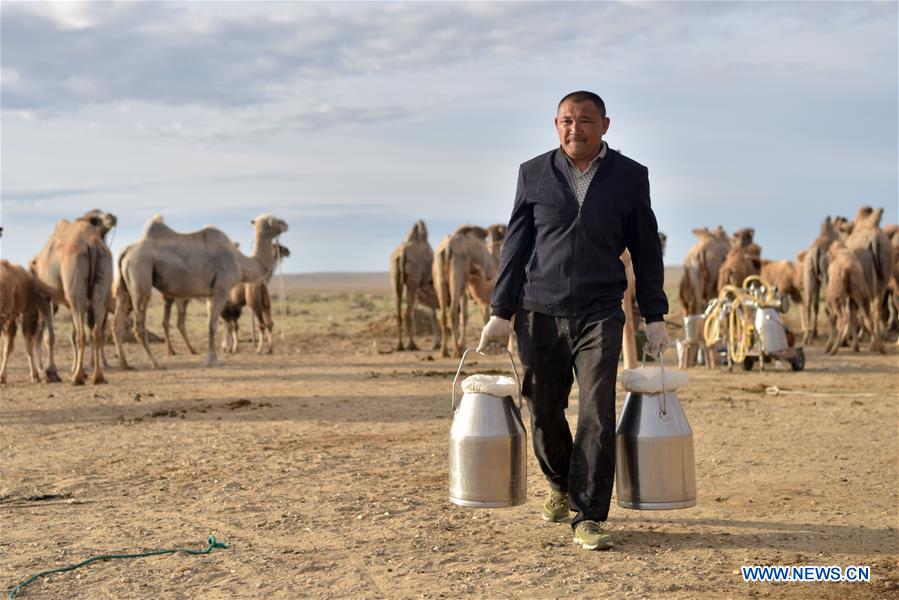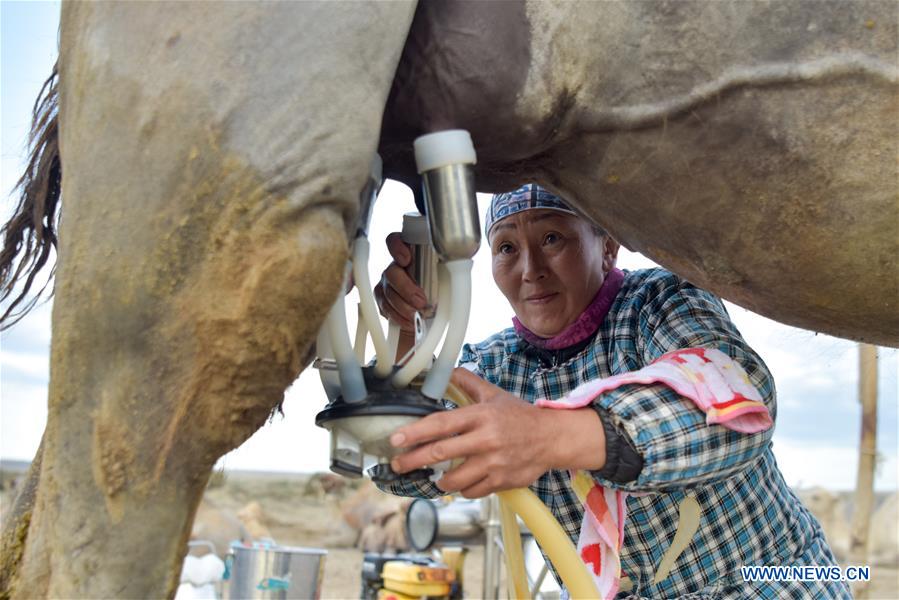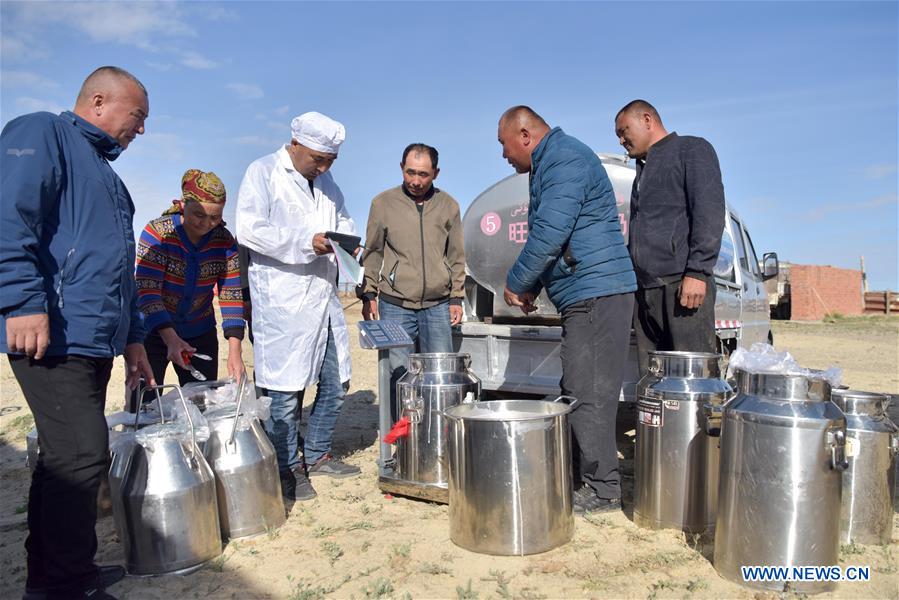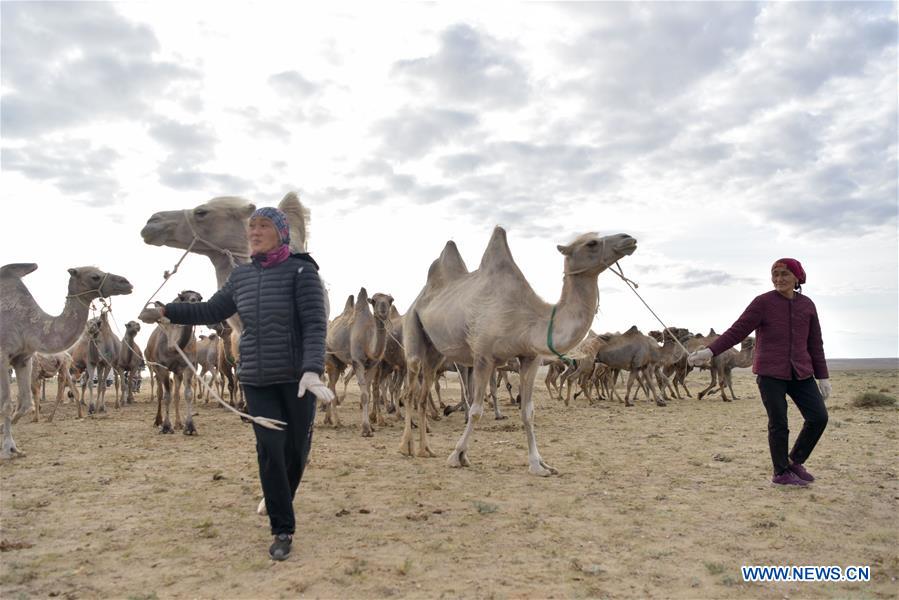Camel breeding industry helps locals increase income in China's Xinjiang
Xinhua
1560263308000

A herdsman transports fresh camel milk in Fuhai County of Altay, northwest China's Xinjiang Uygur Autonomous Region, June 11, 2019. Fuhai County is located along the ancient Silk Road, where the herdsmen of Kazakh ethnic group have a tradition of raising camels. In recent years, Fuhai County takes full advantage of its camel breeding industry to help locals increase their income, with annual per capita net income of herdsmen here currently reaching more than 30,000 yuan (about 4,339 U.S. dollars). (Photos: Xinhua)

A herdswoman milks a camel in Fuhai County of Altay, northwest China's Xinjiang Uygur Autonomous Region, June 11, 2019. Fuhai County is located along the ancient Silk Road, where the herdsmen of Kazakh ethnic group have a tradition of raising camels. In recent years, Fuhai County takes full advantage of its camel breeding industry to help locals increase their income, with annual per capita net income of herdsmen here currently reaching more than 30,000 yuan (about 4,339 U.S. dollars).

A herdsman takes camels to drink water in Fuhai County of Altay, northwest China's Xinjiang Uygur Autonomous Region, June 10, 2019. Fuhai County is located along the ancient Silk Road, where the herdsmen of Kazakh ethnic group have a tradition of raising camels. In recent years, Fuhai County takes full advantage of its camel breeding industry to help locals increase their income, with annual per capita net income of herdsmen here currently reaching more than 30,000 yuan (about 4,339 U.S. dollars).

A herdswoman filters fresh camel milk in Fuhai County of Altay, northwest China's Xinjiang Uygur Autonomous Region, June 11, 2019. Fuhai County is located along the ancient Silk Road, where the herdsmen of Kazakh ethnic group have a tradition of raising camels. In recent years, Fuhai County takes full advantage of its camel breeding industry to help locals increase their income, with annual per capita net income of herdsmen here currently reaching more than 30,000 yuan (about 4,339 U.S. dollars).

A herdsman milks a camel in Fuhai County of Altay, northwest China's Xinjiang Uygur Autonomous Region, June 8, 2019. Fuhai County is located along the ancient Silk Road, where the herdsmen of Kazakh ethnic group have a tradition of raising camels. In recent years, Fuhai County takes full advantage of its camel breeding industry to help locals increase their income, with annual per capita net income of herdsmen here currently reaching more than 30,000 yuan (about 4,339 U.S. dollars).

A buyer purchases camel milk from herdsmen in Fuhai County of Altay, northwest China's Xinjiang Uygur Autonomous Region, June 11, 2019. Fuhai County is located along the ancient Silk Road, where the herdsmen of Kazakh ethnic group have a tradition of raising camels. In recent years, Fuhai County takes full advantage of its camel breeding industry to help locals increase their income, with annual per capita net income of herdsmen here currently reaching more than 30,000 yuan (about 4,339 U.S. dollars).

Herdswomen take camels to graze in Fuhai County of Altay, northwest China's Xinjiang Uygur Autonomous Region, June 11, 2019. Fuhai County is located along the ancient Silk Road, where the herdsmen of Kazakh ethnic group have a tradition of raising camels. In recent years, Fuhai County takes full advantage of its camel breeding industry to help locals increase their income, with annual per capita net income of herdsmen here currently reaching more than 30,000 yuan (about 4,339 U.S. dollars).


